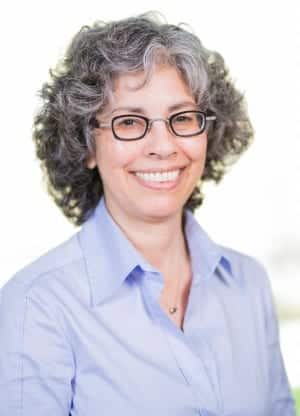Pilar Ossorio, the Morgridge Institute for Research bioethicist in residence, will serve on an international committee convened by the National Academies of Science (NAS) to address the ethically challenging frontiers of human gene editing technology.
“The idea is to help both governments and scientists around the world develop norms, and for funding agencies to develop rules, with regard to the use of human genome editing, particularly for modifications that could alter the human germline,” says Ossorio, a University of Wisconsin–Madison professor of law and bioethics.

This new process offers exciting potential to eliminate some genetic diseases right at their source, but also raises serious concerns about manipulating human life. Ossorio says the issue gained urgency this spring when a Chinese scientific team used CRISPR genome editing on human embryos. The group used embryos with chromosomal anomalies that would have prevented them from surviving.
The experiment was inefficient and led to numerous “off-target events,” meaning unintended parts of the genome also were altered. “Basically, this experiment proved that it would be a really bad idea to try this on a human embryo and implant that embryo,” Ossorio says.
This NAS committee will convene an International Summit of scientists, ethicists, policy makers, patient advocates, and others, with the goal of establishing some consensus on responsible and trustworthy approaches to this field. The Summit will also consider how the risks of human gene editing can be managed, Ossorio says. Already about 40 countries, not including the United States, have placed a moratorium on research involving human germline engineering.
Gene editing could have great medical value if it could change a gene likely to cause disease back to the “wild type,” the benign form in most people, without creating any other unintended genetic changes, Ossorio says. The problem is that CRISPR at this stage is not 100 percent efficient. And in many instances, lower risk reproductive technologies might be used to help parents have children without known disease-causing gene variants.
Ossorio says the current NAS effort is modeled after a historic scientific meeting at Asilomar, CA in 1975 after recombinant DNA was discovered. The major fear at the time was the technology could create a pathogen, such as a new strain of E. coli, that could be released to the environment and be devastating to human health.
That effort culminated in a meeting led by the inventors of recombinant DNA technology, other scientific luminaries, and over 100 leading scientists. The Asilomar group drafted a statement that defined different thresholds of risk and appropriate types of precautions for scientists to use. The statement helped set federal funding policy and was endorsed by governments and organizations around the world.
The current group’s focus will primarily be on genetic modifications that could be passed on to future generations, Ossorio says. Gene editing could be very helpful for improving current therapies being used to fight recurring cancers. One current therapy takes white blood cells from a cancer patient and alters the DNA to help cells recognize and kill cancer in ways they were unable to before.
